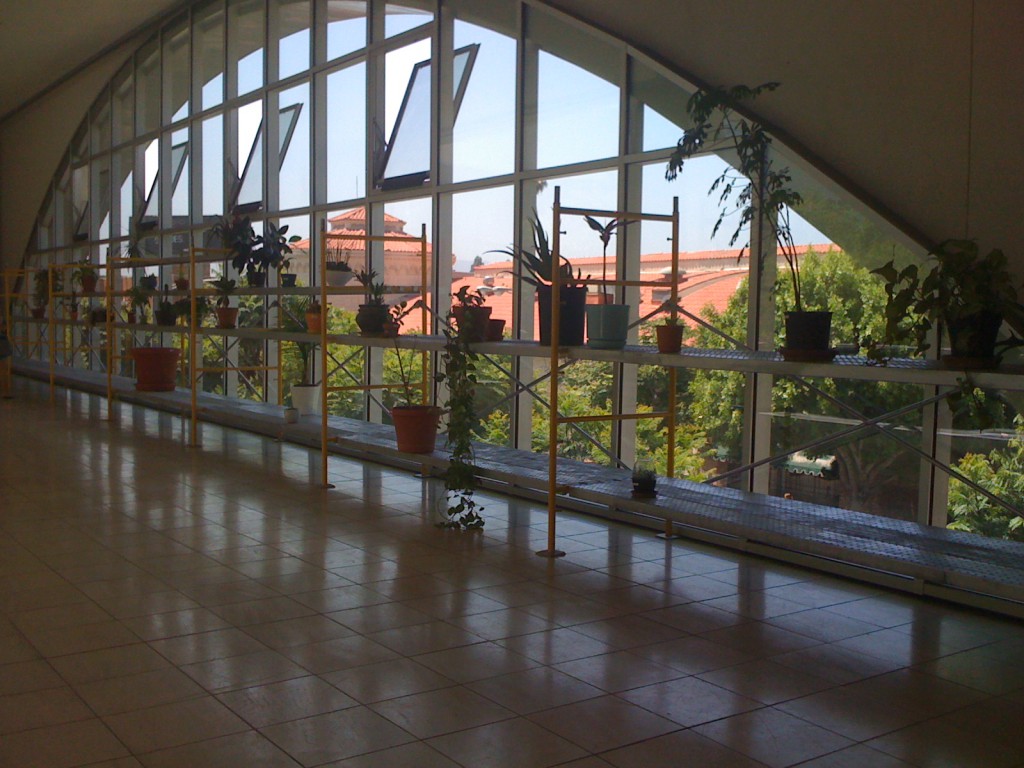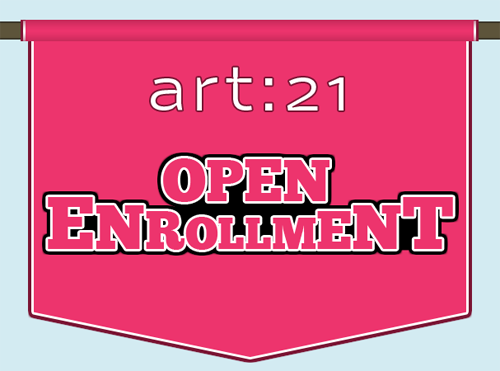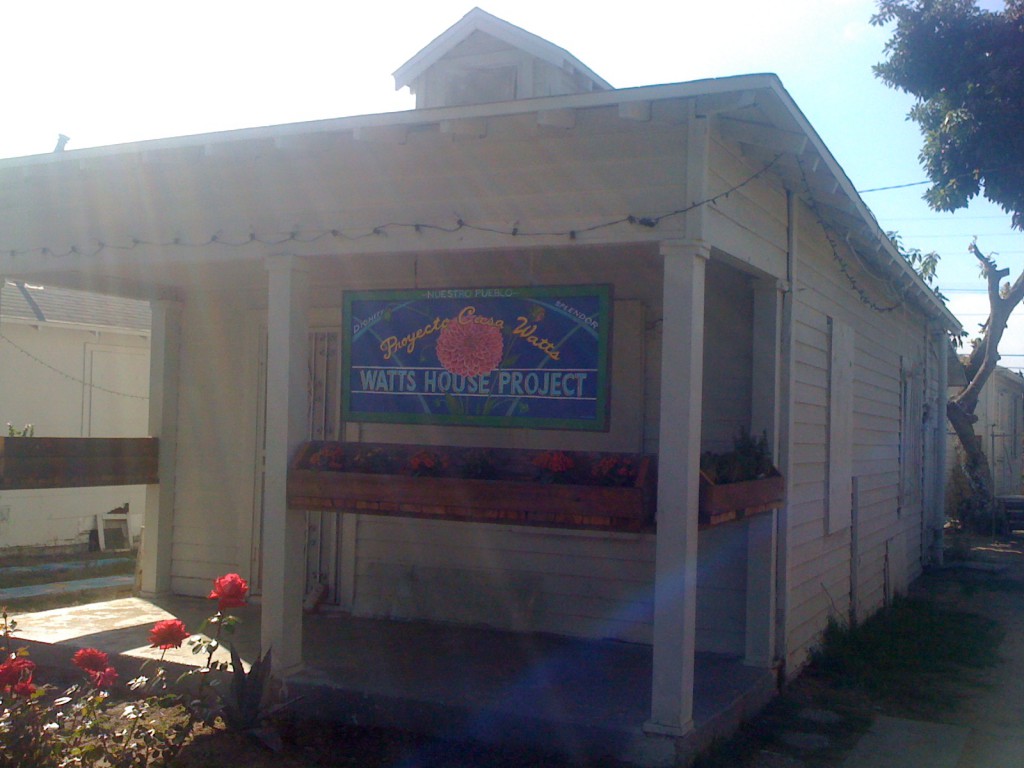In the spring of every year, the Master of Public Art Studies: Art/Curatorial Practices in the Public Sphere program at the University of Southern California, one of two graduate programs in the Roski School of Fine Arts (the other, of course, being the MFA), holds a series of lectures called “Critical Conversations.” The series is also a required class for the first year students and all lectures are open to the public. Since 2009, a number of artists, curators, critics and scholars including Vito Acconci, Gregg Bordowitz, Maria Lind, Julia Bryan-Wilson, Rick Lowe, Mark Bradford, and others presented on their work and the intersection between their practice and larger questions and problems surrounding public art discourse. More recently, and just three weeks into the semester, we’ve had artists Edgar Arceneaux speak about his durational “collaborative artwork in the shape of a neighborhood redevelopment,” Watts House Project, and how it intersects with his studio practice. Sam Durant has also spoken on his recent series of works focused on capital punishment and manifested in raw architectural replications of gallows, as well as his involvement with artist Rick Lowe in a project sited in post-Katrina New Orleans called Transforma Projects.
The visits are always diverse and range in preparation, interest, depth and energy. In fact, my favorite lecture was delivered by artist, writer and activist Gregg Bordowitz. Opening up last year’s lecture series, and setting the bar high enough that it would never be reached again, Bordowitz gave a highly performative lecture, loose in structure but with a fluidity only a mind like his, coupled with an obvious passion for literature and literary theory, could deliver.
Interaction with artists is an obviously crucial component to those interested in becoming curators, writers, and other cultural producers in an economy structured heavily on networking and mentorship. My fellow colleagues and I, like most graduate students, were eager to gain access to insider information and welcomed any sort of advice handed down by professionals that have navigated the contemporary art world to varying degrees of success. The specific form of this interaction is of particular interest to me, as one of the perhaps unfortunate people willfully entering the terrain of doctoral programs in visual studies after I graduate from USC in May. My interest is in art writing and theory and I am curious as to how one is able to make a career out of that. Late last year, I attended a lecture by writer, curator, and feminist activist Lucy Lippard, someone that has sustained a living through her informal titles and did not, like so many others, enter the field of academia. When a person in the audience asked Lippard how she has been able to live through her writing and curatorial and activist endeavors, she bluntly replied, “Keep your living standards low.” I’m really looking forward to it.
Anyhow, last summer, I interned at the Hammer Museum, UCLA’s contemporary art museum, in the newly created Public Engagement curatorial department. This was perfect for my growing research interests that were beginning to shape around a question that elicited varied responses when asked, “What is social practice?” My internship was divided between working on various administrative tasks or attending the Artist Council meetings with the entire curatorial staff. In these meetings, invited guests such as artists Suzanne Lacy and Harrell Fletcher, curator Nato Thompson, and art historian and critic Grant Kester gave presentations to the museum’s curatorial staff focused on the advantages and problems of curating social practice projects into museums. The other portion was spent working with the current Artist-in-Residence, Machine Project. Machine Project is described as a “non-profit community space” and collaborative effort created by artist Mark Allen. The space is located in the Echo Park neighborhood of Los Angeles and has had a number of projects occur outside of the physical confines of its location.
The Public Engagement Department at the Hammer is a unique bridging of visitor services, educational programming, and artist projects that fall under the vast umbrella term “social practice” – or projects that are collaborative and/or relational in nature, with little to no material anchoring by the production of an object as the outcome. The Hammer, like other institutions in Los Angeles (Fallen Fruit at LACMA comes to mind immediately and Finishing School in the 2010 California Biennial, as well), has recently undertaken how to support social practice artists within their institution. This is a task both related but distinct from the historical relationship between performance art and the museum and one curiously apart from the long body of institutional critique that identified the museum as the nexus of forms of exploitative artistic labor seen in the work by the likes of Michael Asher, Andrea Fraser, and many others.

Vacationing houseplants on the Hammer Museum’s Lindbrook Terrace, part of Machine Project’s residency, July 2010
At any rate, the residency of Machine Project at the Hammer took the form of a series of events that would occur approximately a few times a month. The events were all related to Mark Allen’s playful interrogation of the relationship between the museum and its audience, reflective of the curatorial bend to his artistic practice. Allen also invited other artists from around Los Angeles, both involved directly or close friends of Machine Project, to develop projects. The resulting events included a sleepover at the museum titled the “Dream In,” a re-enactment larp (yes, that’s “live action role playing”) of 1970s self-actualization seminars throughout the museum courtyard, free admission to all visitors wearing a bell around their necks (a project developed by Machine Project’s sound curator), and a Houseplant Vacation, where people were invited to drop off their houseplants for a one-month stay at the museum complete with entertainment (readings and sound performances for the plants), vacation portraits taken by artist Lisa Anne Auerbach, and postcards from the plants to their owners.
During my time, I was able to see the way in which these projects attempted to shift conventional social codes of moving through a museum and to entice a frequenting of the museum beyond visiting only for opening nights, while creating an almost displacing whimsical experience that is atypical of visits for the majority of museums and other cultural institutions. I was also able to talk with Mark Allen, an equally insightful, open and overall just fun guy, and the curatorial team, particularly the Associate Curator of Public Engagement (and also a friend of mine), Elizabeth Cline, on the problematics of curating immaterial, participatory projects in a museum context when one cannot point to a specific art object and when the artistic process is collaborative and set in a rigid institutional structure.
The time I’ve spent at the Hammer has directly impacted and deepened my scholarly interests in assessing and first defining what is social practice and as I type this, I’m happy to report that I am about one month away (!!!) from a completed thesis that deconstructs social practice through its institutional packaging into museums and graduate programs and its critical theorizations. For me, this process has underscored the importance of a continuous form of critical engagement through art writing. It recalls a lecture for the MPAS program by writer and scholar John Welchman, who has edited all of Mike Kelley’s collected volumes and has written extensively on Kelley’s practice as a means of what Welchman calls, “critical advocacy.” This entails a relationship between writers and artists (that don’t take on the task of writing about their own work) as a way of actively historicizing a practice. As an aside, I’d like to note that the title of this entry is lifted from a catalog essay by Howard Singerman for the 2001 MOCA LA exhibition, Public Offerings. The essay focused on the high concentration of Los Angeles area graduate art school institutions and Singerman lifted it from a 1987 Mike Kelley piece. Just to bring it fuuuullll circle, you know.
Anyway, broadly speaking, art writing, like other forms of periodical information, is plagued with its own need to conform to the growing proliferation of blogs and the immediacy of the Internet, coupled with the supposed (and perpetual) death of print materials. Despite this, history persists and art writing builds the referent discourse. I’m banking on it.
Melinda Guillen is a writer and organizer from Los Angeles, CA. She currently attends the University of Southern California’ s Masters of Public Art Studies: Art/Curatorial Practices in the Public Sphere program, with an emphasis on theory and criticism. She completed her B.A. in Gender Studies and Sociology from the University of Nevada, Las Vegas. She is writing her thesis on critical methodologies and notions of collaboration, interdisciplinarity, and activism in contemporary practices.




